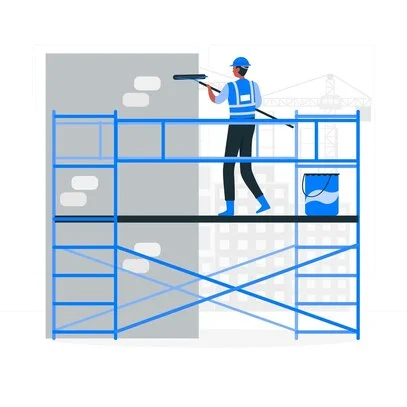In the United Kingdom, there are strict regulations in place. Understanding these regulations is essential for construction professionals, site managers, and workers to maintain a safe working environment.
This article will provide a comprehensive overview of the scaffolding regulations in the UK, addressing key aspects and answering frequently asked questions.
If you need to arrange commercial scaffolding rental in London, visit our section with scaffolding services and find a reliable vendor in a few clicks.
1. Health and Safety at Work Act 1974
Under this Act, employers have a legal H&S duty. That is to say, every employer must ensure the health and safety of its employees. This act sets the foundation for all workplace safety regulations, including scaffolding regulations. It places responsibility on employers to conduct risk assessments, provide adequate training, and maintain a safe working environment.
2. Work at Height Regulations 2005
These Regulations provide specific guidelines for working at height, including scaffolding activities. These regulations require employers to assess the risks involved in working at height and take appropriate measures to prevent accidents.
3. Construction (Design and Management) Regulations 2015
These Regulations place responsibilities on all parties involved in scaffolding projects. From designers to site operatives and even a client. The main requirement here is that scaffolding design and erection must be executed only by professionals and comply with these regulations to mitigate risks and prevent accidents.
4. British Standards for Scaffolding
In addition to legal requirements, the UK has established British Standards for scaffolding to ensure quality, safety, and reliability. The British Standards Institution (BSI) publishes several standards related to scaffolding, including BS EN 12811-1:2003 for performance requirements and general design and BS 5973:2019 for temporary works equipment. Adhering to these standards helps ensure that scaffolding systems meet the necessary criteria for strength and stability.
5. Competence and Training
All individuals erecting, altering, inspecting, and dismantling scaffolding must have the necessary competence to carry out their duties safely. Competence can be demonstrated through relevant training, qualifications, and experience in the field. In other words, all persons engaged in scaffolding workflow must have the relevant CISRS cards.
Conclusion
Understanding and adhering to scaffolding regulations in the UK is of utmost importance to ensure the safety and well-being of workers in the construction industry. Compliance with these regulations helps mitigate risks, prevent accidents, and create a secure working environment. By following the guidelines outlined in this article and obtaining the necessary training and qualifications, construction professionals can navigate the complexities of scaffolding regulations with confidence and contribute to safer construction practices.


